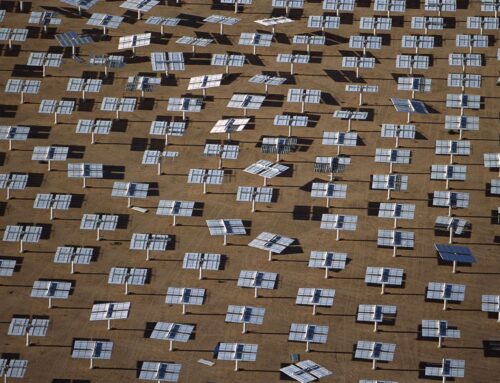Complex legal deals power green energy growth in Asia-Pacific
May 15, 2025

For small, landlocked Laos, the ability to generate and sell power across its borders has become “a pillar of economic growth”, according to the Asian Development Bank.
The lender’s latest economic survey of the south-east Asian nation notes that its electricity exports last year rose by 17 per cent compared with 2023, generating much-needed foreign exchange.
Most of that has come from hydro power, but wind and solar projects are increasingly part of the mix. This includes the first cross-border wind project in Asia, known as Monsoon Wind, under construction in the south of Laos. The 600-megawatt (MW) facility consisting of 133 wind turbines, for which the Asian Development Bank syndicated $693mn in project finance in 2023, will provide electricity to neighbouring Vietnam.
The project in Laos reflects a broader push in south-east Asia to harness renewable energy to power economic growth by deploying cross-border arrangements that are allowing regional markets to develop. In December 2024, Singapore utility Sembcorp Power signed a deal to start importing green electricity from neighbouring Malaysia, produced by Tenaga Nasional, Malaysia’s main utility.
Efforts to streamline regulations and technical standards to help integrate cross-border trade in the region — home to Asean, the 10-nation regional grouping — have been under way since a power grid agreement was signed in 2007. Work is progressing on replacing this with a new agreement that would come into force before the current one expires at the end of this year.
However, Sandra Seah, a partner in the Singapore practice of law firm Bird & Bird, notes the persistent gap between what the World Economic Forum estimates to be $150bn in annual clean energy investments needed for the region by 2030 and annual commitments of only $30bn in 2021. As a result, “policymakers in Asean should double down on efforts to improve investor confidence by developing clear regulatory frameworks and guidelines”, Seah says.
Lawyers say the imperative of meeting net zero targets to tackle climate change has boosted cross-border electricity sales in the region. And it has helped to overcome concerns about threats to national energy security that acted as a barrier to regional integration for decades.
Yet the cross-border nature of these projects continues to present legal challenges that are testing the technical creativity of lawyers.
One project highlighting this was work undertaken last year by Pinsent Masons on setting up the largest cross-border solar power project in Asean so far, also in Laos. This involved building a 1,000MW solar farm in the north of the country to sell electricity to China. It is backed by CGN Energy Technology (Laos), a subsidiary of China General Nuclear Power Corporation.
John Yeap, a former partner at Pinsent Masons and now a consultant to the law firm, says lawyers in a team from China, Hong Kong, Laos and Singapore had to come up with a mechanism to reconcile multiple interests. This was because the energy project had as many as four stakeholders: the governments of Laos and China, a private power developer in Laos, and the Chinese grid operator.
As the first important Laos-China cross-border power project at this scale, lawyers had to develop a contractual template that could be used for all four to “agree on risk allocation and management on a financeable basis”, Yeap says.
Usually, there are two parties involved in power projects: a national government acting as buyer, and a private utility as the seller. But here, a contractual model “involving an analysis of four key stakeholders had to be designed and implemented”, says Yeap.
“This meant the design of an internal tool that we used to help map all possible risks for all stakeholders in both jurisdictions — allowing us to identify the risks and helping us to filter them on the basis of the likelihood of such risks arising.”
Finding ways to align the interests of various stakeholders to improve the commercial viability of green energy projects has been a feature of legal work in other parts of the Asia-Pacific region too.
Law firm Ashurst has advised Australian battery company Akaysha Energy on the development of a battery energy storage system at Orana, New South Wales. Construction of this project started last year after Akaysha, owned by asset manager BlackRock, secured debt financing worth a total of A$650mn ($417mn) from 11 banks, including ANZ and Singapore’s DBS. It was the largest such financing for the battery sector at the time.
Central to the financing was an arrangement devised by Ashurst, known as a virtual tolling agreement (VTA). This helps to navigate constraints affecting traditional power purchase agreements in Australia between battery energy producers and buyers of the energy — offtakers — such as utilities. The constraints include a prohibition on contracting with multiple off-takers, as well as an accounting treatment that often disadvantages off-takers, lawyers say.
Dale Gill, a partner in Ashurst’s Brisbane office, says that as a result of the Akaysha VTA, the energy storage market in Australia is now “shifting away from the traditional model as the sole bankable offtake structure”.
In fact, he adds: “Many battery developers and off-takers are now considering VTAs or models with similar features.”
Search
RECENT PRESS RELEASES
Related Post



